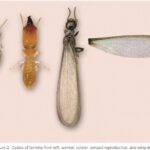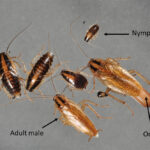Introduction:
In the intricate tapestry of the natural world, few creatures captivate our curiosity and wonder like the cicadas. These ancient insects, with their distinctive hums and intriguing life cycles, have long been shrouded in mystery and fascination. As summer approaches, the rhythmic symphony of cicada choruses fills the air, signaling the arrival of these enigmatic creatures. In this blog post, we will delve into the intriguing world of cicadas, exploring their life cycles, unique features, and the role they play in the ecosystem.
The Lifecycle Dance:
Cicadas are known for their remarkable life cycles, which can span anywhere from two to 17 years, depending on the species. The periodical cicadas, such as the well-known Brood X in North America, emerge in large numbers at once, creating a spectacle that captures the attention of both scientists and nature enthusiasts alike. These insects spend the majority of their lives underground as nymphs, feeding on sap from tree roots. When the time is right, they undergo a synchronized mass emergence, transforming into adults that live above ground for a short but intense period.
Unique Features:
Cicadas are characterized by their large, membranous wings, prominent compound eyes, and distinctive sound-producing organs called tymbals. It is the males that create the characteristic buzzing or clicking sound to attract females. This auditory symphony, often reaching deafening levels during peak emergence, serves both as a mating call and a method of warding off predators.
One of the most remarkable features of cicadas is their ability to molt. The nymphs molt several times as they grow, shedding their exoskeletons to reveal larger, more developed forms. Witnessing a cicada nymph emerging from its exoskeleton is a testament to the wonders of metamorphosis and the resilience of nature.
Ecological Significance:
Cicadas play a crucial role in the ecosystem, contributing to nutrient cycling and forest health. As nymphs, they feed on the sap from tree roots, and as adults, they become a vital food source for a variety of predators, including birds, mammals, and even other insects. Their emergence in large numbers can also have cascading effects on plant growth, as the nutrient-rich exoskeletons left behind after molting decompose and enrich the soil.
Cultural Significance:
Throughout history, cicadas have held symbolic significance in various cultures. In ancient China and Japan, they were associated with themes of rebirth and immortality. In Greece, their song was believed to be a chorus celebrating the muses. In modern times, cicadas continue to capture the human imagination, inspiring art, literature, and even culinary creations in some regions where they are considered a delicacy.
Conclusion:
The cicada, with its ancient lineage and mesmerizing life cycle, stands as a testament to the wonders of the natural world. As we marvel at the synchronized emergence of these creatures and listen to their symphony echoing through the summer air, let us not only appreciate their beauty but also recognize the vital role they play in the delicate balance of our ecosystems. The cicada’s story is one of resilience, transformation, and the enduring magic of nature.








